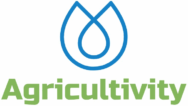Aquaponics is a sustainable farming technique that combines aquaculture (raising fish) with hydroponics (growing plants in water). It’s an efficient and environmentally friendly way to produce fresh vegetables and fish in urban areas, but it can also present some challenges. In this blog post, we’ll compile an Urban Aquaponics Troubleshooting Guide to the most common issues that aquaponics farmers encounter and how to troubleshoot them.
1. Water Quality Problems
The health of your fish and plants is directly linked to the quality of your water. Poor water quality can lead to stunted plant growth, fish deaths, and a host of other problems. To maintain optimal water quality, test your water regularly for pH, ammonia, nitrite, and nitrate levels. If you notice any issues, adjust your water chemistry accordingly.
2. Pest Infestations
Like any type of farming, aquaponics can attract pests such as aphids, whiteflies, and spider mites. To prevent infestations, regularly inspect your plants and fish for signs of pests. You can also introduce beneficial insects like ladybugs or lacewings to your system to control pest populations.
3. System Leaks
Leaks in your aquaponics system can be a major problem, as they can cause water loss, fish deaths, and even structural damage. To prevent leaks, inspect your system regularly for signs of wear and tear, and replace any damaged components immediately. You should also make sure that your system is properly installed and supported to prevent unnecessary stress on the pipes and tanks.
4. Overfeeding
Overfeeding your fish can lead to excess waste and nutrient buildup in your water, which can harm both your fish and plants. To prevent overfeeding, stick to a regular feeding schedule and only feed your fish what they can eat in a few minutes. You should also avoid using high-protein feeds, as these can contribute to excess waste.
5. Temperature fluctuations
Aquaponics systems are sensitive to temperature fluctuations, which can affect plant growth and fish health. To maintain a stable temperature, insulate your system and monitor it regularly. You may also need to install a heating or cooling system to regulate the temperature in extreme weather conditions.
In conclusion, aquaponics can be a rewarding and sustainable way to grow fresh produce in urban areas, but it does require some troubleshooting. By monitoring your system regularly and addressing any issues promptly, you can overcome these common challenges and enjoy a thriving aquaponics system. For more tips and resources on urban agriculture, be sure to check out Agricultivity! Explore our complete Urban Aquaponics Troubleshooting Guide for in-depth solutions and insights into common issues faced by urban aquaponics enthusiasts.





